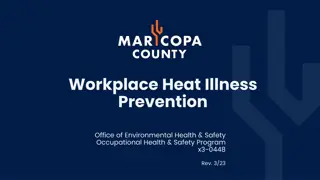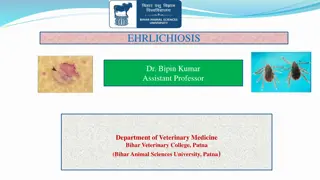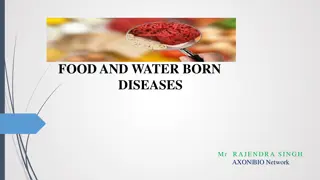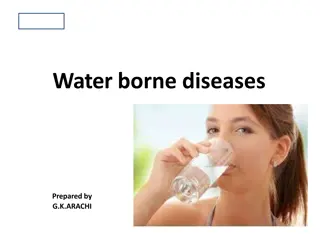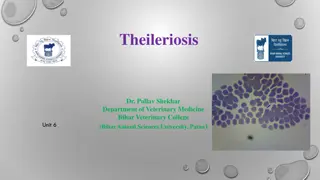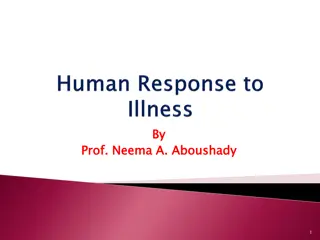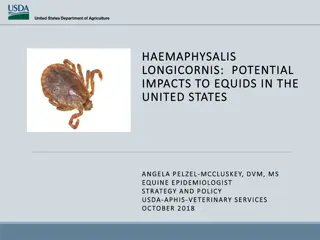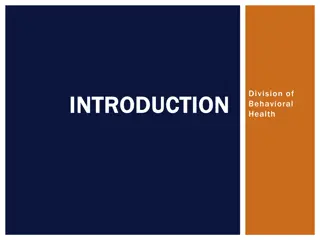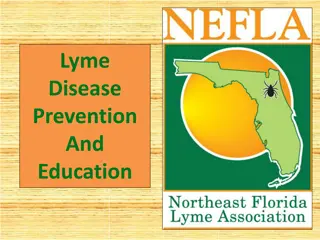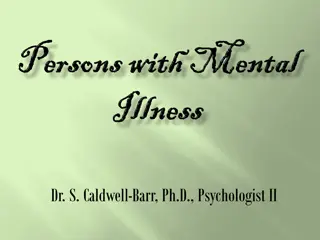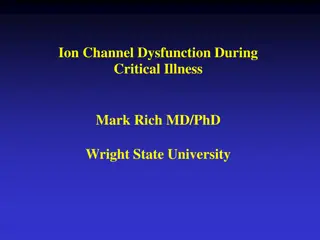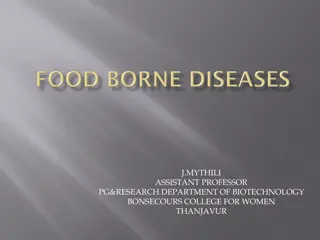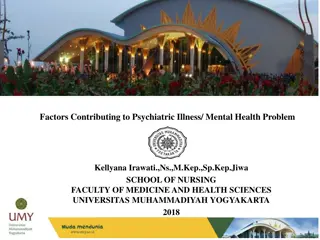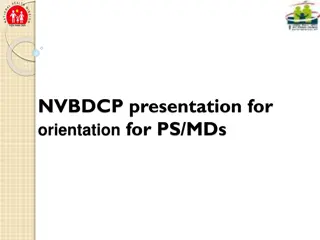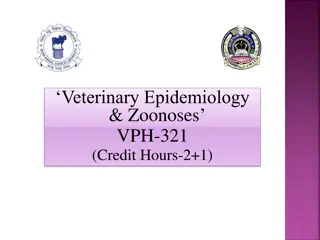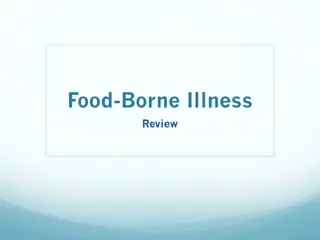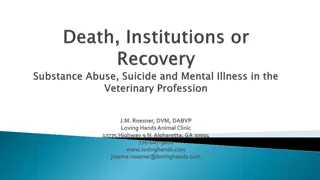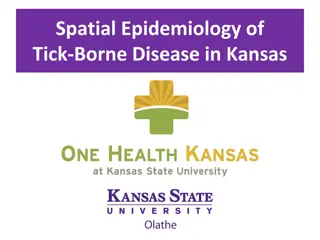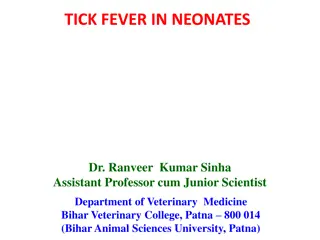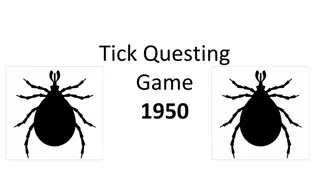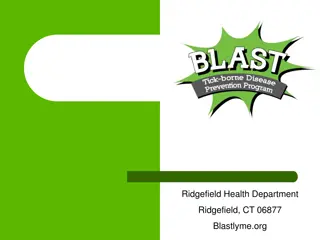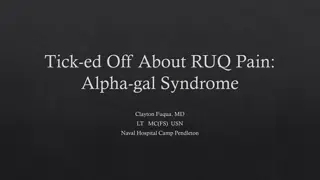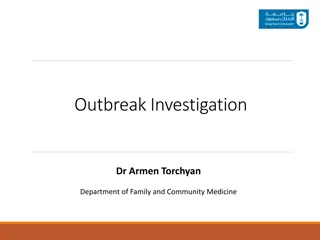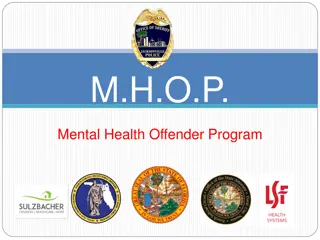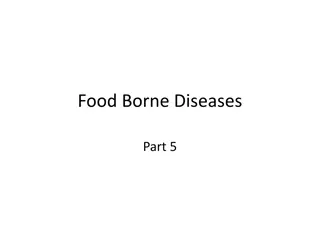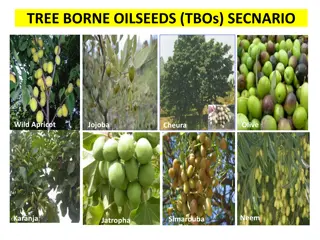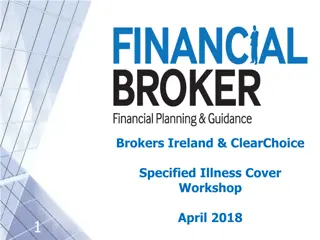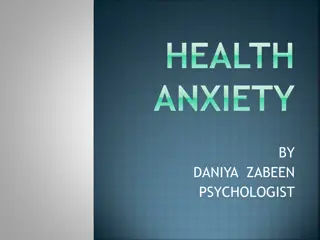A Student Exploration of the Global Impacts of Climate Change on Human Health
This research delves into the effects of climate change on human health, covering how a warming climate, changes in precipitation, and increased flooding frequencies impact various health aspects such as infectious diseases, nutrition, and mental health. The study provides a visual model illustratin
5 views • 17 slides
The History of NAMI and the Family Movement
Founded in 1977 by two mothers seeking support for loved ones with mental illness, NAMI (National Alliance on Mental Illness) has grown to be a leading grassroots organization advocating for mental health awareness, support, and education. The Contra Costa chapter, NAMI CC, has a rich history of pro
1 views • 15 slides
Understanding Mental Health vs. Mental Illness
Explore the nuanced differences between mental health and mental illness, where mental health pertains to the quality of mental and emotional wellbeing for everyone, while mental illness refers to diagnosable conditions with long-term effects that do not affect everyone in the same way. Gain insight
9 views • 18 slides
Flea and Tick Products Market: Industry Analysis and Forecast 2032
The global flea and tick products market size was valued at USD 6.20 Billion in 2022 and is likely to reach USD 13.83 Billion by 2031, expanding at a CAGR of 9.32% during 2023 \u2013 2031.
2 views • 4 slides
Workplace Heat Illness Prevention Program Overview
This workplace heat illness prevention program overview discusses risk factors, how the body handles heat, types of heat illness, prevention strategies including water consumption and shade, importance of acclimatization, emergency response procedures, OSHA standards, job and personal risk factors,
0 views • 28 slides
Understanding Canine Monocytic Ehrlichiosis: Symptoms, Phases, and Treatment
Canine Monocytic Ehrlichiosis is a tick-borne disease caused by Erhlichia species, primarily affecting dogs. This article covers the pathogenesis, clinical findings in different phases (acute, subclinical, and chronic), and associated symptoms. Learn about the transmission, distribution, and potenti
0 views • 11 slides
Understanding Food and Water-Borne Diseases: Causes and Classification
Food and water-borne diseases, caused by contaminated food or water, lead to acute illnesses. These diseases are classified into food-borne infections and food-borne intoxications. Food-borne infections, triggered by pathogenic microorganisms, can be fungal, bacterial, viral, or parasitic, with long
3 views • 57 slides
Understanding Water-borne Diseases and Pathogens
Drinking contaminated water can lead to water-borne diseases, causing millions of deaths annually, especially in developing countries. Potable water is essential for health and development, as water-related diseases arise from inadequate water quality and poor sanitation practices. Various pathogens
1 views • 28 slides
Understanding Bovine Theileriosis: Causes, Symptoms, and Prevention
Bovine theileriosis is a tick-borne haemoprotozoan disease that causes significant economic losses in livestock due to high mortality rates, weight loss, abortion, and reduced milk yield. The disease is characterized by fever, anemia, and respiratory and digestive disorders. It is caused by parasite
1 views • 11 slides
Nursing Strategies for Emotional Reactions to Illness
In this content, the focus is on understanding the stages of illness and the crucial role of nurses at each stage. It also highlights the patient's emotional needs during illness and the importance of maintaining a positive self-image. Nursing strategies for assisting patients in coping with anxiety
0 views • 8 slides
Potential Impacts of Haemaphysalis longicornis on Equids in the United States
Haemaphysalis longicornis, an Asian longhorned tick, poses potential threats to equids in the United States. Originally from Northeast Asia, this tick has been detected in the U.S. and has a wide range of hosts, including cattle, sheep, dogs, humans, and various wildlife. Its parthenogenic reproduct
0 views • 14 slides
Managing Physical Health in Severe Mental Illness with a Focus on Diabetes
This educational material presents a comprehensive slide set designed to aid in the management of physical health in individuals with severe mental illness, focusing on diabetes. It includes insights on the challenges faced by healthcare professionals, learning objectives on diabetes management, and
0 views • 14 slides
Understanding Involuntary Commitment Criteria for Adults with Serious Mental Illness
Involuntary commitment for adults with serious mental illness is a sensitive issue that involves specific criteria to determine if someone poses a danger to themselves or others. The criteria include having a serious mental illness, being a threat to self or others, or having an inability to provide
0 views • 67 slides
Understanding the Impact of Tobacco Use on People with Serious Mental Illness
People with serious mental illness are significantly affected by tobacco use, with smoking being a leading preventable cause of early death in this population. This presentation highlights the reasons behind smoking in individuals with mental illness, challenges faced in cessation efforts, and the i
0 views • 12 slides
Understanding Food Poisoning and Its Causes
Food poisoning is a common threat that can be prevented with proper food handling. It is caused by various microorganisms, natural toxins, and chemical residues. The illness is characterized by rapid onset of symptoms like vomiting and diarrhea. Common bacteria causing food poisoning include Staphyl
0 views • 27 slides
Comprehensive Guide to Lyme Disease: Prevention, Transmission, Symptoms, and Treatment
Lyme disease, caused by the Borrelia burgdorferi bacterium transmitted through tick bites, can lead to various symptoms if left untreated. Learn about prevention methods, how to handle tick bites, recognize symptoms, and understand the challenges in testing and treating acute and chronic Lyme diseas
0 views • 14 slides
Food Safety and Prevention of Food-borne Illnesses
An estimated 48 million Americans suffer from food-borne illnesses yearly, caused by harmful microorganisms due to poor food handling practices. Factors contributing to food-borne illnesses include improper cooking, inadequate storage, and cross-contamination. To prevent such illnesses, it is essent
0 views • 23 slides
Food Safety and Preventing Food-borne Illness
This lesson focuses on the importance of food safety, addressing how clean our food is and at what points safety can be compromised. It delves into common types of microbes that contaminate foods and explores ways in which food safety can be compromised. The activity involves case studies on food sa
0 views • 11 slides
Understanding Mental Illness and Disability Rights
This content provides insights into commonly held attitudes and beliefs about mental illness, the American with Disabilities Act of 1990, definitions of mental illness per NRS 433A.115, and interactions with individuals with mental health issues. It also covers misconceptions, the 72-hour hold for m
0 views • 60 slides
Understanding Ion Channel Dysfunction in Critical Illness
An intriguing case study presents a young male with weakness and coma in the ICU following pneumonia and sepsis. Nerve conduction results indicated critical illness myopathy and polyneuropathy, along with cardiac abnormalities. Reduced muscle excitability was attributed to a sodium channelopathy. Th
0 views • 14 slides
Understanding Food-Borne Diseases: Causes, Symptoms, and Prevention
Food-borne diseases are caused by the ingestion of contaminated food containing microorganisms or chemicals. There are two types of food infections - contaminated food acting as a carrier of microorganisms and food serving as a culture medium for pathogens. Bacteria, viruses, and parasites are commo
0 views • 20 slides
Factors Contributing to Psychiatric Illness and Mental Health Issues
Factors contributing to psychiatric illness and mental health problems include predisposing factors such as psychological and biological factors, as well as precipitating stressors like challenging stimuli. Mental health is defined as a state of well-being involving happiness, contentment, and effec
0 views • 15 slides
National Vector Borne Disease Control Program Overview
The National Vector Borne Disease Control Program (NVBDCP) focuses on preventing and controlling diseases such as Malaria, Dengue, Chikungunya, Filariasis, Japanese Encephalitis, and Kala-azar. Implemented at state level, NVBDCP aims to eliminate these diseases through strategic planning, policy mak
0 views • 9 slides
Understanding Kyasanur Forest Disease: A Veterinary Perspective
Kyasanur Forest Disease (KFD) is a tick-borne viral hemorrhagic fever caused by the Flavivirus, primarily affecting monkeys and humans in certain endemic areas of India. The disease was first identified in 1957 in Karnataka and is characterized by symptoms like fever and bleeding disorders. The viru
0 views • 16 slides
Understanding Legal Ramifications of Mental Illness in Criminal Justice System
Mental illness presents complex challenges in the criminal justice system, impacting court rulings, constitutional issues, and perceptions of vulnerability. Cases like James Holmes and John Hinckley highlight the intersection of mental health and criminal behavior. Legal standards regarding executio
0 views • 9 slides
Food Safety Review: Preventing Food-Borne Illness
Explore key aspects of food safety including the definition and symptoms of food-borne illnesses, categories of causes, common pathogens like Salmonella and E. coli, personal hygiene practices, proper food storage techniques, and thawing methods. Gain insights into preventing food-borne illnesses th
0 views • 11 slides
Understanding the Intersection of Addiction and Mental Illness in Veterinarians
Explore the profound impact of addiction and mental illness on veterinarians, highlighting the biological and environmental components, the prevalence of serious mental illness, the challenges in seeking mental health help, and the heightened risk of suicide within the veterinary profession. Promote
0 views • 28 slides
Spatial Epidemiology of Tick-Borne Diseases in Kansas
Explore the spatial epidemiology of tick-borne diseases in Kansas through data analysis and design of informative materials. Help the Kansas Department of Health and Environment by analyzing tick-borne disease data, calculating cases over the years, and creating graphs to visualize important trends.
0 views • 8 slides
Understanding Tick Fever in Neonates: Symptoms, Diagnosis, Treatment, and Prevention
Tick fever in neonates is a febrile disease transmitted by tick bites, with symptoms including fever, loss of appetite, depression, weakness, red urine, anemia, and jaundice. The disease can be diagnosed through clinical symptoms, tick presence, and blood smear examination. Treatment involves medica
0 views • 9 slides
Tick Questing Game 1950 - Fun Temperature-based Card Game
Tick Questing Game 1950 is an exciting card game where players draw cards based on temperature conditions. The game involves questing ticks, recording sheets, and bonuses for successful quests. Players must strategize based on temperature ranges to keep their ticks alive and compete with their partn
0 views • 108 slides
Understanding Lyme Disease: Risks, Symptoms, and Prevention
Tick-borne diseases, particularly Lyme Disease, pose a significant health concern in the United States. Learn about the various diseases transmitted by infected ticks, the rise in Lyme Disease cases, who is at risk, and the symptoms to watch out for. Discover the basics of Lyme Disease, including it
0 views • 44 slides
Understanding Alpha-Gal Syndrome: A Comprehensive Overview
Alpha-gal syndrome (AGS) is a unique allergy triggered by the Lone Star tick in the US, leading to sensitization to alpha-gal. This presentation covers the cause, symptoms, diagnosis, and treatment of AGS, alongside the overlap with US military installations. Explore the clinical manifestations, geo
0 views • 17 slides
Outbreak Investigation and Management in Public Health
Outbreak investigation is crucial in understanding, distinguishing, and managing disease outbreaks. This involves identifying the nature of outbreaks, studying key terms like endemic and epidemic, and examining outbreak settings such as food-borne and water-borne scenarios. By investigating outbreak
0 views • 53 slides
Mental Health Offender Program: Addressing Mental Illness in the Criminal Justice System
A pilot program, M.H.O.P., aims to reduce the burden on the criminal justice system by providing pretrial release, personalized care plans, and court supervision for defendants with mental illness. By addressing the needs of the mentally ill, the program strives to break the cycle of criminal behavi
0 views • 21 slides
Understanding Fungal and Chemical Food-Borne Intoxications
Fungal intoxications are caused by mycotoxins produced by fungi in improperly stored food, with aflatoxicosis being a significant concern. Aflatoxins can lead to acute hemorrhagic syndromes and long-term liver tumors. Prevention strategies include proper drying and storage of foods. Chemical food-bo
0 views • 19 slides
Tree Borne Oilseeds (TBOs) Scenario and Promotion Overview
This document provides insights into the Tree Borne Oilseeds (TBOs) scenario including a list of oilseeds like Neem, Karanja, and Jatropha, states covered, distribution, and uses of various TBOs. It also discusses the introduction of TBOs, their botanical names, oil/fat percentages, and utilization.
0 views • 12 slides
Enhancing Advising Process for Specified Illness Cover Workshops
Guidance on developing a structured process for advising on Specified Illness Cover, addressing challenges faced by financial brokers in selling and positioning the product. Workshop objectives include client engagement, research, explaining benefits, and product understanding. The content covers ag
0 views • 53 slides
Remembering Jonathan Larson: Musical Theater Visionary
Jonathan Larson, the brilliant musical theater songwriter and librettist known for Rent and Tick, Tick...BOOM!, left a lasting impact on Broadway before his untimely death in 1996. Through his work, he explored social issues like multiculturalism, addiction, and homophobia, aiming to bring meaningfu
0 views • 7 slides
Understanding Health Anxiety: Causes, Symptoms, and Impacts
Health anxiety, also known as illness anxiety or hypochondria, is characterized by obsessive worry about having a serious medical condition. Individuals with health anxiety misinterpret minor body sensations as symptoms of a severe illness, despite reassurance from medical professionals. This condit
0 views • 16 slides
Lyme Disease Awareness and Prevention Training
Learn about Lyme disease spread by blacklegged ticks, tick life cycle stages, and how to avoid tick bites. Discover tips for checking and removing ticks effectively to prevent infection. Stay informed and take necessary precautions to reduce the risk of Lyme disease transmission.
0 views • 10 slides




